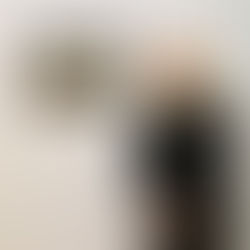Gravity Revisited Opening Speech - Dr Ewen Jarvis - West End Art Space 2022
- Jenny Reddin Artist

- Sep 10, 2022
- 3 min read
In preparation for this launch, I visited Jenny’s studio a couple of weeks back, and while viewing the works selected for this show, it occurred to me that the more time I spend with Jenny’s paintings, the more macabre they become.
It happens in a very quiet kind of way, and it’s a bit perplexing, because I find them luminous, alluring, intriguing and delightful to engage with. And yet they never fail to produce a lingering disquiet.
Now on these reconnaissance visits to artist studios, I don’t know if I see myself as a detective or a thief. But all the same I’m there to case the joint for information that will enable me to successfully represent the artworks. And so I keep asking myself: What am I seeing? What am I hearing? What is this studio telling me? And while on
site two associations spontaneously came to mind.
Firstly, Jenny’s brushless paintings put me in mind of the Greek Goddess Circe, an enchantress who uses potions to bring about transformations, and secondly the selection of artworks caused me to recall that the collective noun for moths is a whisper.
At any rate, later that day, when I was reviewing the photographs I’d taken of the artworks, the first question I asked myself was: Why do these paintings produce disquiet?
Admittedly, delight is generally my first response to Jenny’s work: a delight in the masterful use of colour, in the invention of new forms, in their detail, texture and overall impression, a delight in their beauty, and a delight in seeing authentic emotions and meanings emerging.
And yet I’m one of
those people who tend to delight in being disturbed. I’m in rapture when a Mozart sonata, which has been building in intensity by degrees, suddenly teeters, before descending into orchestrated chaos. And I love figurative painting the most at the precise point at which it begins to slide obliquely into abstraction. So thankfully there are artists to whom I can turn, safe in the knowledge that their works will draw as freely from the heights as they do from the depths, and Jenny Reddin’s works do not disappoint.
At the centre of Jenny’s drive to create the works for this exhibition is a desire to create artworks that contain seeds of transformation, and they achieve this by operating outside a range of polarities.
There is, as I’ve said, a disquiet that begins to disturb our sense of delight. There are intricate details and vague impressions
bleeding into each other. Symmetry has been deformed into strange asymmetries through a suspension of flow, a springtime brightness has been arrested; comprehension and confusion occur simultaneously and the present form openly reveals the patterns of its past. There is latent power in artworks that destabilise these polarities, and this destabilisation opens roads to transformation.
These works also seem to disregard polarities of space. For they seem equally at home in minimalist office spaces, hotel lobbies and luxury apartments as they would be in an eighteenth century laboratory surrounded by surgical instruments, animal skeletons, armadillo shells, and faded organs suspended in formaldehyde. As such, these works seem to bloom in a place beyond life and death.
Another way these artworks sidestep binary oppositions is through a mimesis of nature’s forms and systems. These artworks skilfully recreate a randomness that mimics the forms and patterns of life, and in doing so they provide a curative experience on canvas.






















Comments